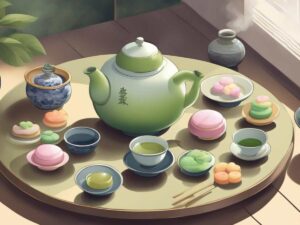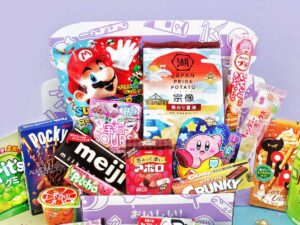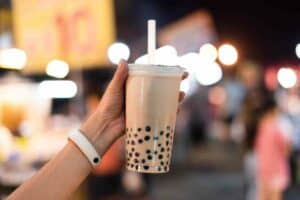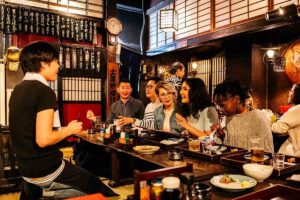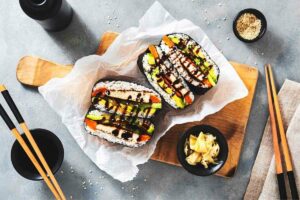Gluten-free diets are becoming more and more popular, as people become more aware of the dangers of gluten.
But what is gluten, and why is it bad for some people? Gluten is a type of protein that is found in wheat, barley, and rye.
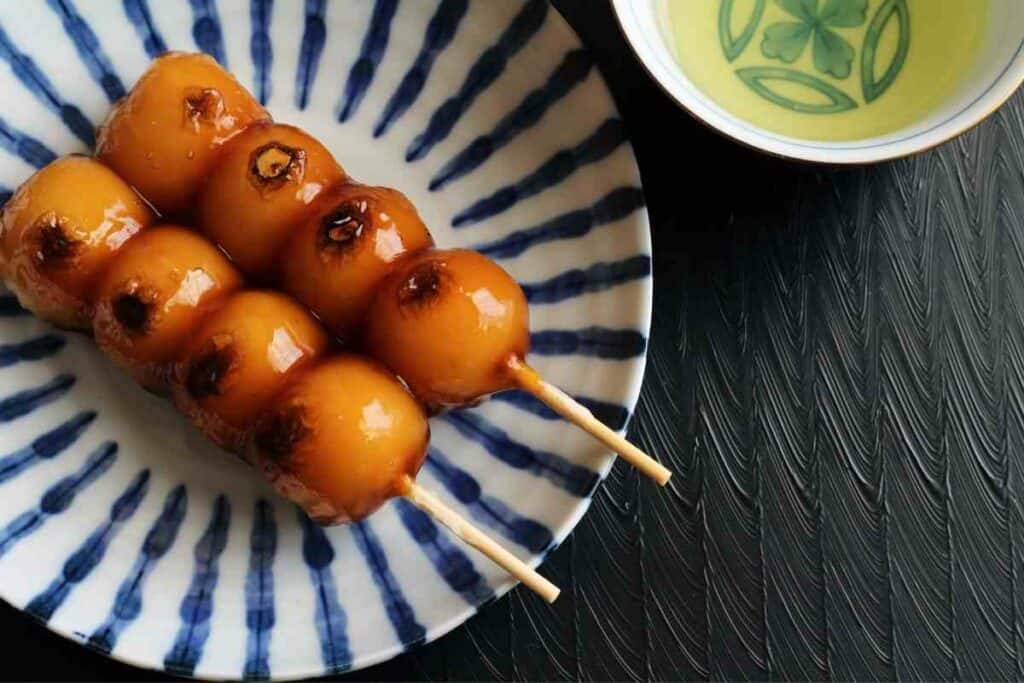
For people who have celiac disease, gluten can cause serious health problems.
But even for people who don’t have celiac disease, gluten can be harmful.
It can cause digestive problems and has been linked to other health issues such as obesity and diabetes.
But what about Dango? Is it gluten-free? In this blog post, we will explore the answer to that question and more.
Table of Contents
What Is Dango?
Dango is a Japanese dumpling made from mochiko (rice flour), related to mochi.
It is often served with green tea. Dango comes in many shapes and colors and is often used as a decorative element in Japanese cuisine.
Dango is eaten year-round, and there are many regional variations.
Dango is made from mochiko (rice flour), water, and sugar.
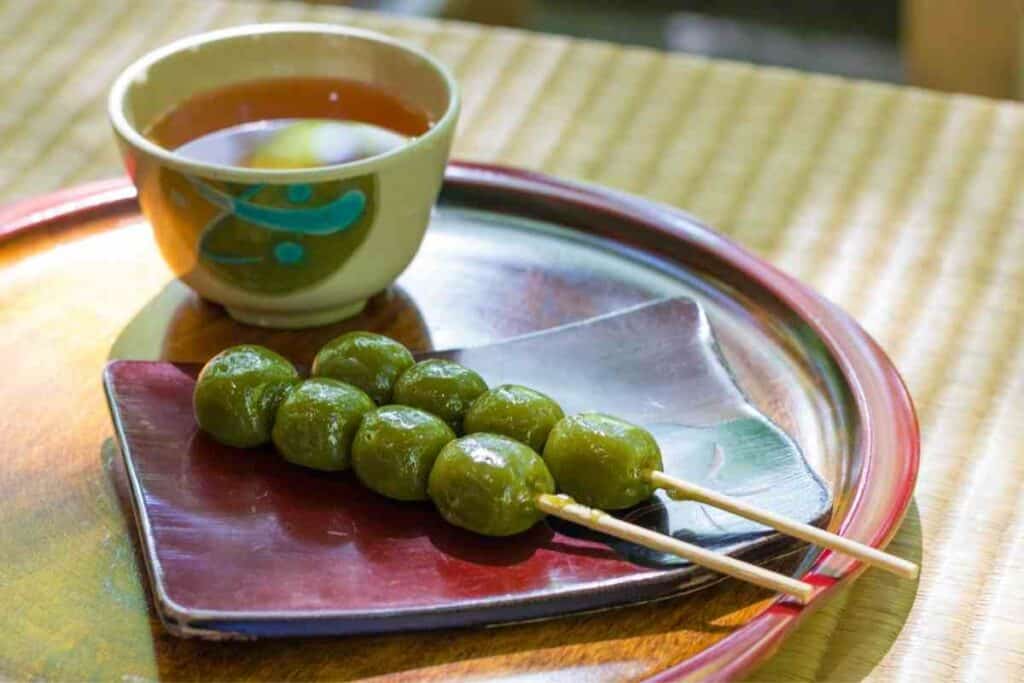
The dough is formed into small balls and then cooked on a skewer over an open flame.
Dango can be served with a variety of sauces or toppings, such as soy sauce, sweetened soy sauce, or kinako (roasted soybean powder).
Dango is a popular snack in Japan and can be found at many festivals and outdoor events. It is also a common element in Japanese bento boxes.
Is Dango Gluten-Free?
Yes, Dango is gluten-free. This popular Japanese treat is made from mochiko (rice flour), and sometimes tapioca starch or potato starch, which are all gluten-free.
Dango can be enjoyed plain, or with a variety of sweet or savory toppings.
So, if you’re looking for a gluten-free snack that’s both delicious and versatile, Dango is a great option.
Dango is a traditional Japanese treat that is made from rice flour and often served on a skewer. It is sweet and chewy and can be flavored with different sauces or toppings.
Dango is usually safe for people with celiac disease or gluten sensitivities, as it does not contain any wheat or gluten-containing ingredients.
However, it is often served with soy sauce, which does contain gluten.
So, if you’re avoiding gluten, be sure to ask for your Dango without soy sauce or choose a gluten-free variety.
Types of Dango
There are many types of Dango, but here are the seven most common ones.
1. Mitarashi Dango (みたらし団子)
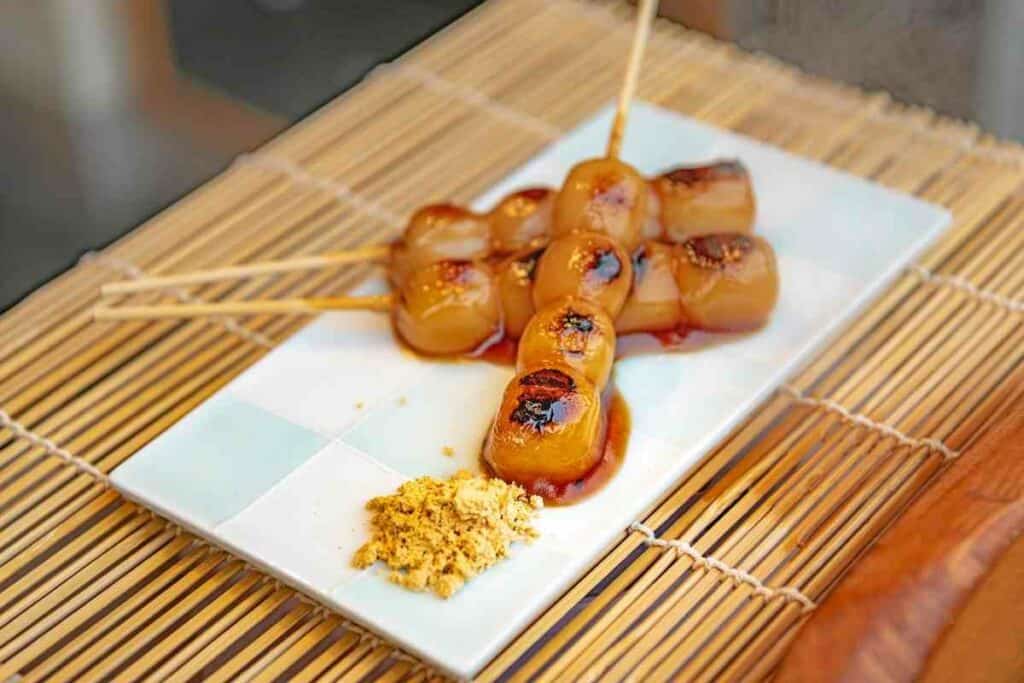
Mitarashi Dango is a popular rice dumpling in Japan.
It consists of three to five lightly grilled rice dumplings on a wooden stick, dressed with a gooey sweet soy sauce glaze.
2. Sanshoku Dango (三色団子)
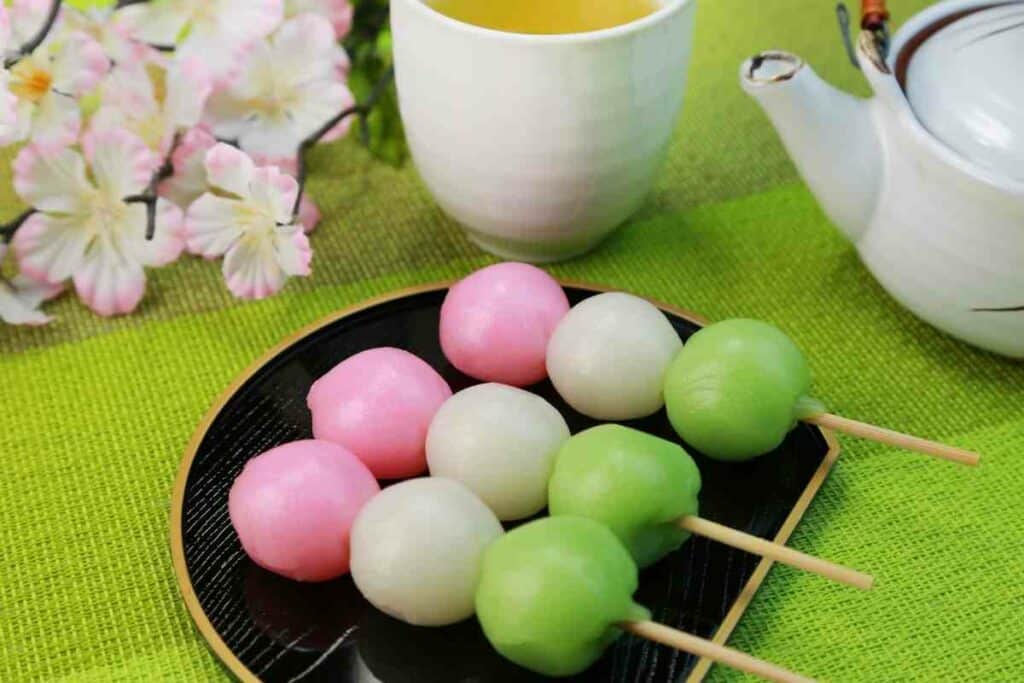
Sanshoku Dango, which means “three hues of dumplings”, is a popular dish for viewing cherry blossoms.
In general, the pink dumpling is colored using a red colorant called “Shokubeni (食紅)”, whereas the green dumpling’s tint comes from mugwort extract.
3. Goma Dango (ごま団子)
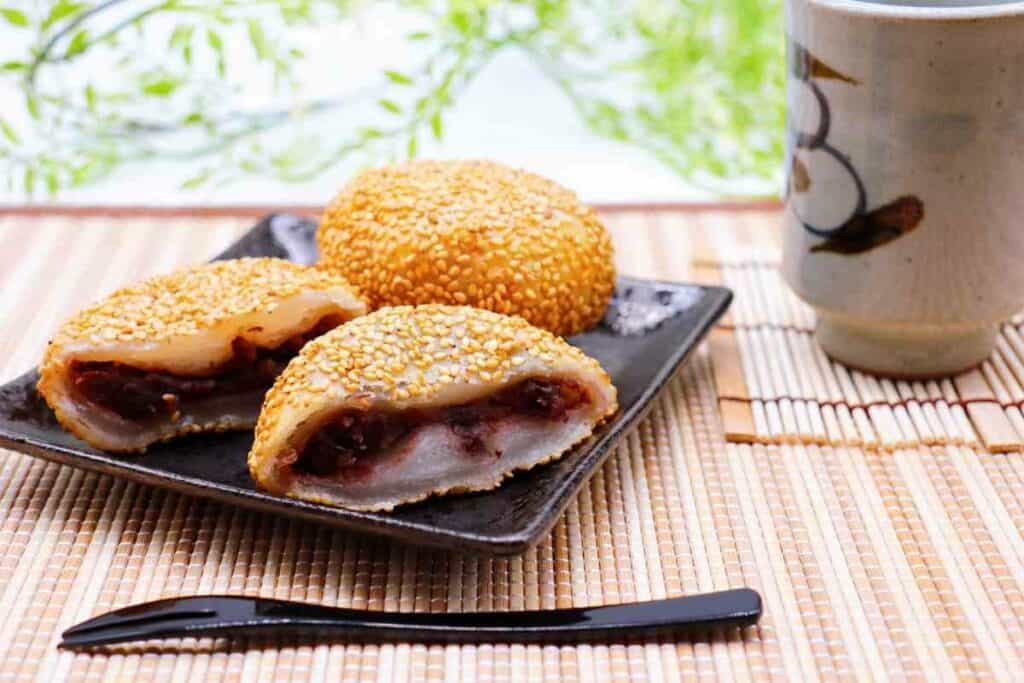
Goma Dango, also known as sesame dumpling, is a sweetened rice dumpling wrapped in savoy cabbage and served with black sesame sauce.
4. Kinako Dango (きなこ団子)
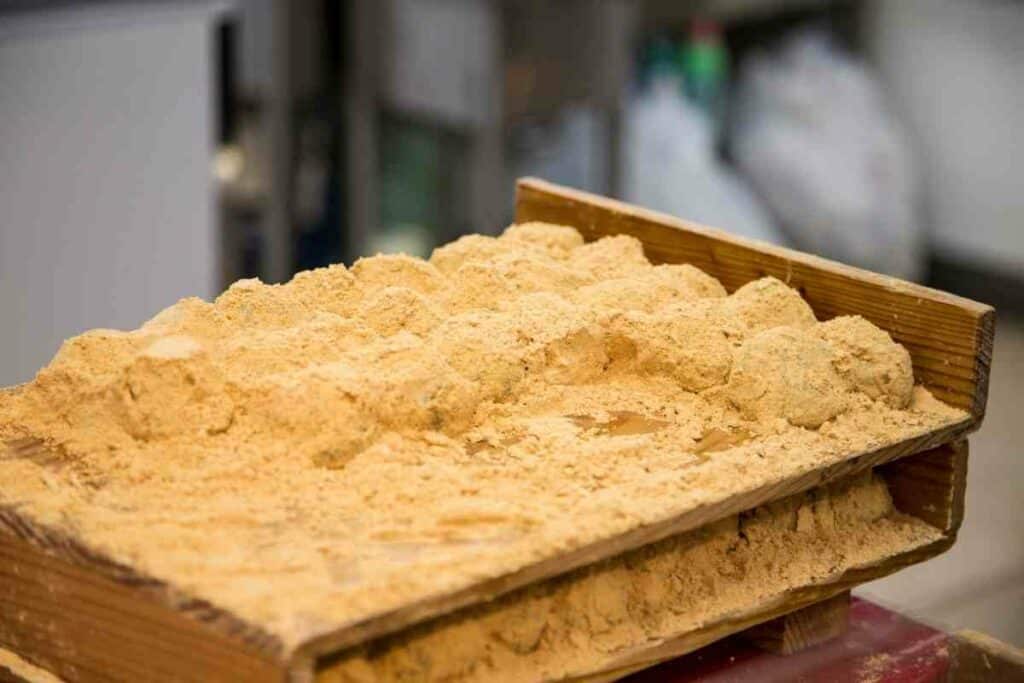
The Japanese have a long history of consuming soybeans (known in Japan as “kinako”) in their beans and meat dishes.
They can also be found in kōji (納豆; boiled soybeans), miso soup, and some sweets.
“Kinako” is a traditional Japanese food made by grinding roasted soybeans into powder.
5. Zunda Dango (ずんだ団子)
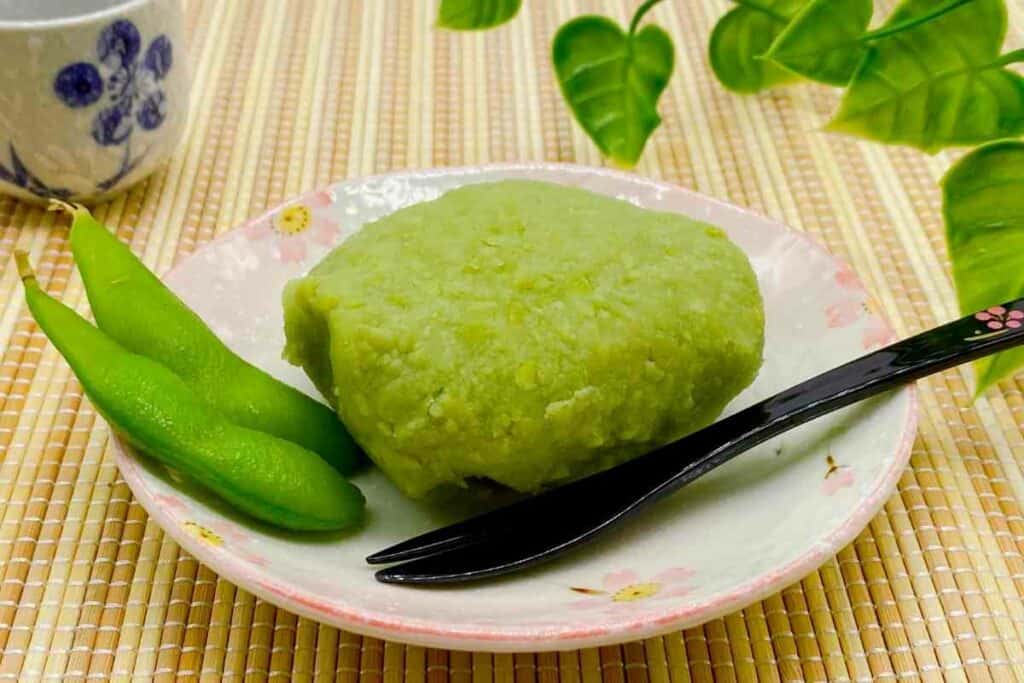
Zunda Dando is a traditional Tohoku Japanese dessert made from mashed boiled Edamame soybeans sweetened with sugar.
It’s covered in a delicious Zunda paste.
6. Shiratama Dango (白玉団子)
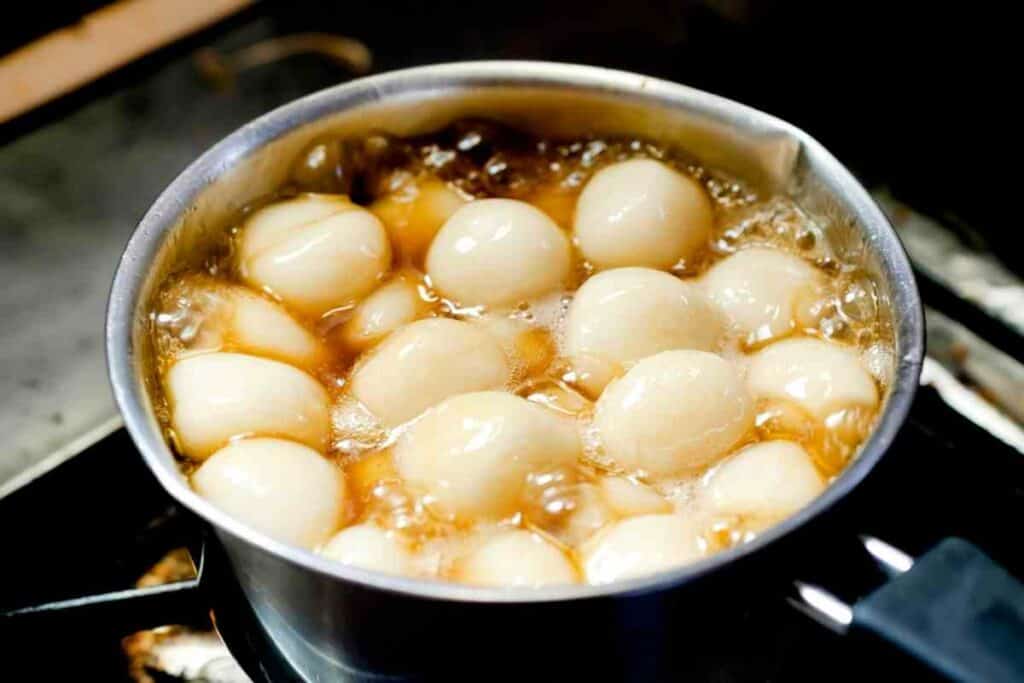
The white glutinous rice flour dumpling, also known as “Shiratamako (白玉粉)”, is called “Shiratama Dango”.
This rice dumpling is commonly served with desserts.
7. Kibi Dango (きびだんご)
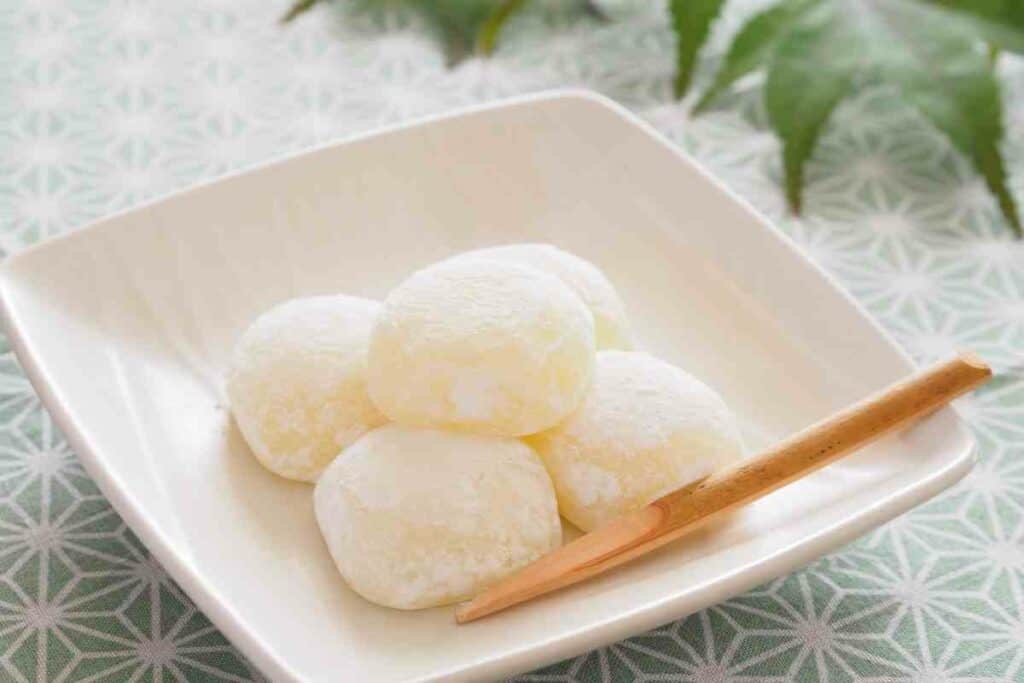
Kibi Dango is a local dish from Okayama Prefecture that consists of a dough made with “Mochiko” (glutinous rice flour, sugar, starch syrup, and millet powder) that is warmed and kneaded.
Kibi Dango is a soft, chewy white rice dumpling created by heating and kneading:
- glutinous rice flour
- sugar
- starch syrup
- and millet powder
What Is Dango Flour Made Of?
Dango is a popular Japanese snack made from rice flour and mochi powder. The rice flour gives the Dango its chewy texture, while the mochi powder gives it its sticky quality.
Dango is often served on a skewer with three to four pieces of Dango per skewer.
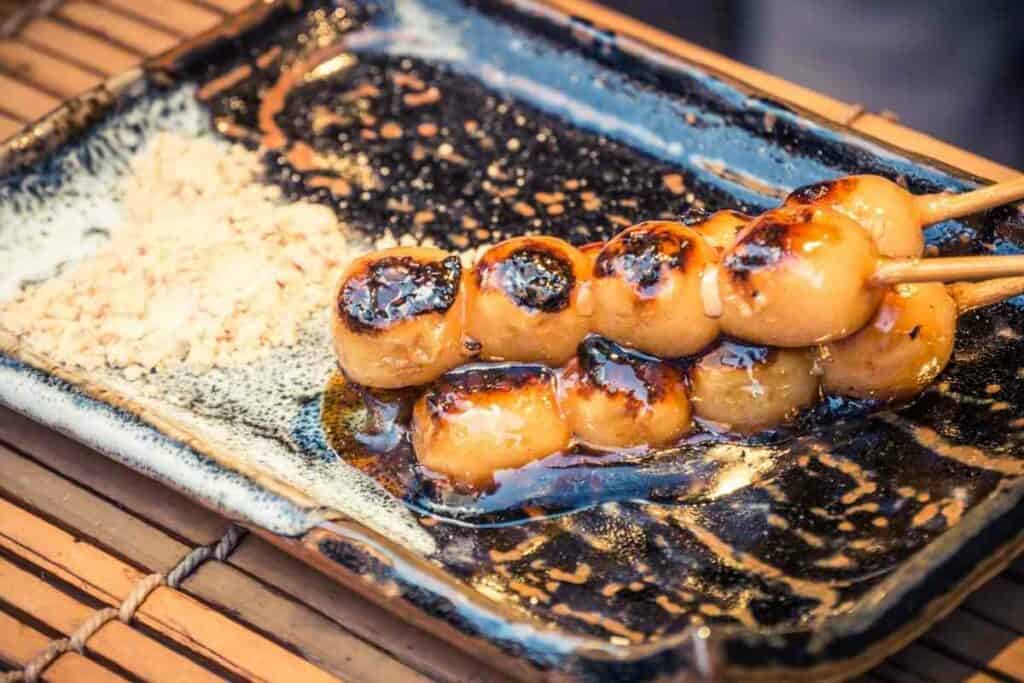
It can be served plain, or with a variety of toppings such as sweet soy sauce, kinako (roasted soybean powder), or cinnamon sugar.
Dango is also a popular ingredient in many Japanese desserts such as:
- daifuku (a soft mochi, stuffed with sweet bean paste)
- and anmitsu (a dessert made with agar jelly, fruits, and sweet bean paste)
Conclusion
Dango is gluten-free, making it a great choice for those with gluten sensitivities or allergies.
In addition to being free of allergens, Dango is also GMO-free and dairy-free, so it’s perfect for anyone looking for a healthy snack that fits their dietary restrictions.
Whether you’re on the go and need a quick bite or are looking for a sweet treat, Dango is the treat for you.
Posts You May Like
- Japanese Traditional Sweets (Wagashi): A Guide to Their Origins and Varieties
- A Taste of Japan in Every Bite – Japanese Candy & Snack Box Review
- Bubble Tea vs Boba Compared: What’s the Difference?
- Best Izakaya Foods for a Relaxed Night Out (My Top 10 Picks)
- Edo Kiriko Whiskey Glasses (Japanese Heritage in Every Pour)
- Japanese Viral Foods on Social Media (Discover the Top 10)

